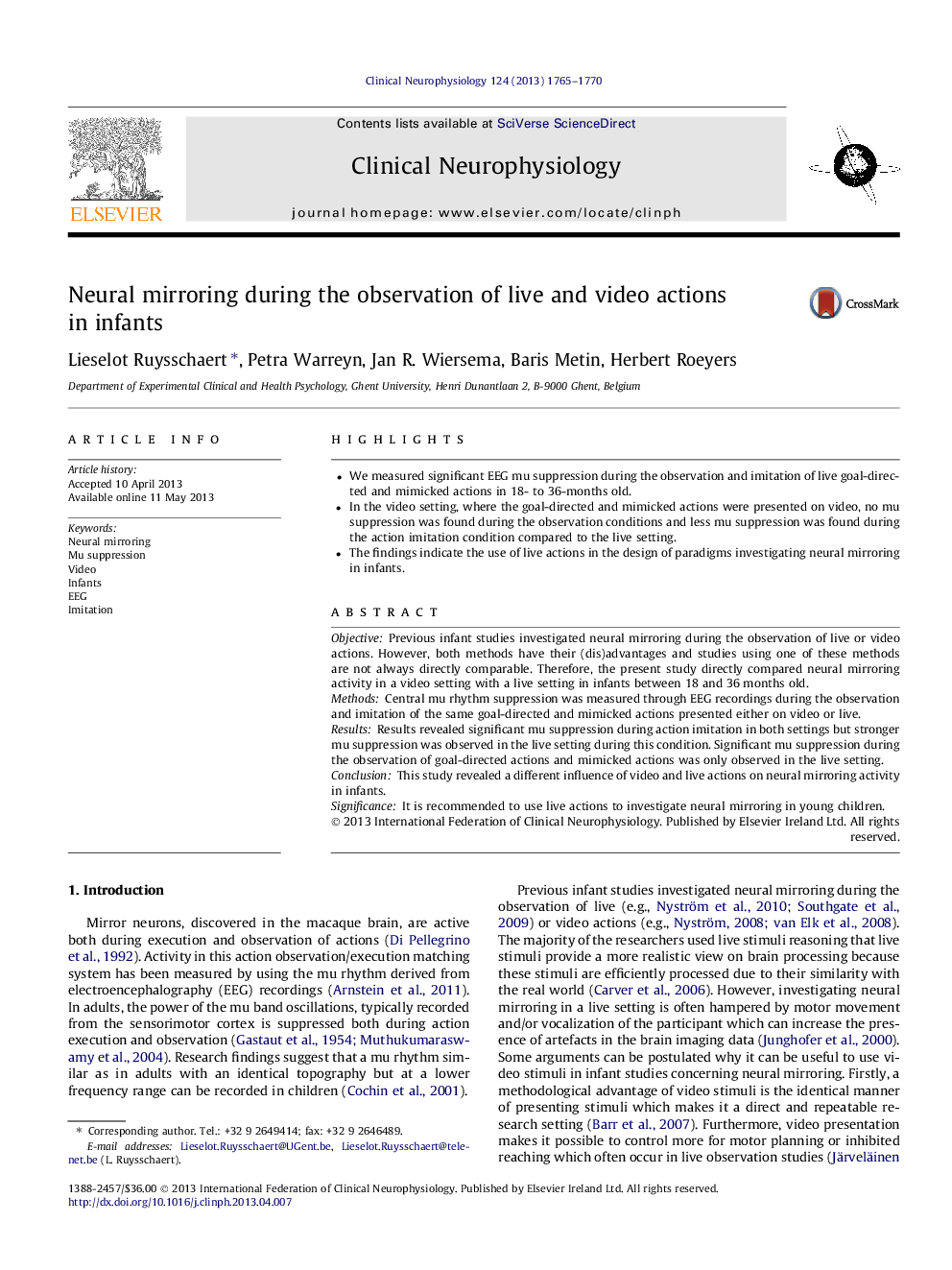| Article ID | Journal | Published Year | Pages | File Type |
|---|---|---|---|---|
| 6008975 | Clinical Neurophysiology | 2013 | 6 Pages |
â¢We measured significant EEG mu suppression during the observation and imitation of live goal-directed and mimicked actions in 18- to 36-months old.â¢In the video setting, where the goal-directed and mimicked actions were presented on video, no mu suppression was found during the observation conditions and less mu suppression was found during the action imitation condition compared to the live setting.â¢The findings indicate the use of live actions in the design of paradigms investigating neural mirroring in infants.
ObjectivePrevious infant studies investigated neural mirroring during the observation of live or video actions. However, both methods have their (dis)advantages and studies using one of these methods are not always directly comparable. Therefore, the present study directly compared neural mirroring activity in a video setting with a live setting in infants between 18 and 36Â months old.MethodsCentral mu rhythm suppression was measured through EEG recordings during the observation and imitation of the same goal-directed and mimicked actions presented either on video or live.ResultsResults revealed significant mu suppression during action imitation in both settings but stronger mu suppression was observed in the live setting during this condition. Significant mu suppression during the observation of goal-directed actions and mimicked actions was only observed in the live setting.ConclusionThis study revealed a different influence of video and live actions on neural mirroring activity in infants.SignificanceIt is recommended to use live actions to investigate neural mirroring in young children.
